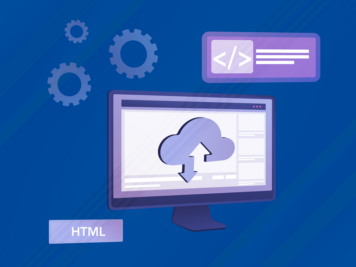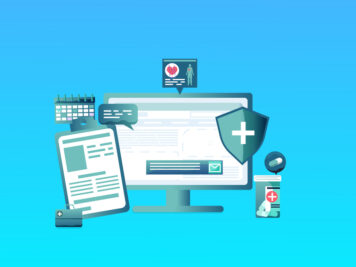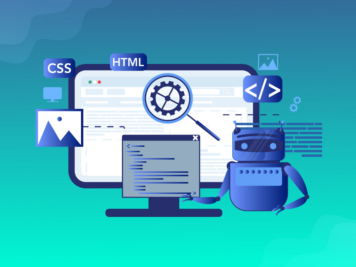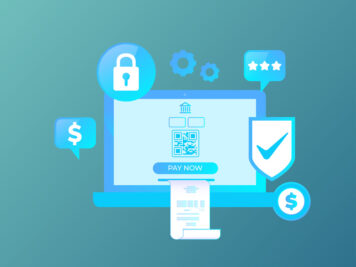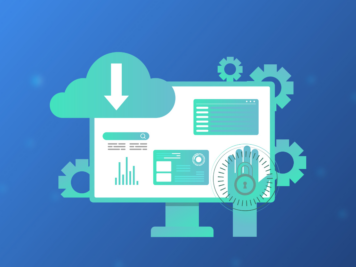Despite all the advances in healthcare—AI-based diagnostics, telemedicine, precision medicine—one basic problem still exists: disconnected systems.
If you walk at any major hospital in the United States, you’ll hear a similar story. Patient data is scattered across incompatible platforms, medical records don’t flow between experts, and outdated systems are straining under modern demands. Even after years of federal incentives designed to promote interoperability, this problem continues to plague U.S. healthcare organizations. According to a KLAS Research 2024 report, 63% of healthcare executives say their biggest obstacle to achieving their digital transformation goals is interoperability and integration.
It’s a problem of both scale and complexity. As digital health accelerates, so do the technical and operational disparities between systems-built decades apart. Healthcare software integration is no longer simply a technical imperative—it is the key to delivering faster, smarter, and more equitable patient care.
The real challenge
Let’s not confuse fragmentation with complexity. Complexity in health care is inevitable: coordinating patient pathways across specialties, monitoring longitudinal health information, complying with regulations. But fragmentation? That’s a design choice.
Consider the typical patient experience:
- Your primary care physician requests a referral to a specialist. The referral arrives by fax (yes, a fax) because the specialist’s system doesn’t integrate with the hospital’s electronic medical record.
- A patient undergoing postoperative care switches insurers. Suddenly, his or her vital medical record is unavailable, locked away in payers’ proprietary databases.
- A rural clinic that deploys remote patient monitoring devices finds that integrating them with its state’s Medicaid system is a logistical nightmare
These aren’t technical footnotes. They’re mundane glitches that disrupt care and inflate costs. Inefficient data sharing, according to multiple analyses, contributes hundreds of billions of dollars in additional costs to U.S. healthcare spending each year. More worryingly, fragmented systems can directly impact patient safety: One in five patients suffers delays or errors due to incomplete information.
Regulatory pressure a driving force to healthcare software integration
For years, US healthcare policy has been pushing organizations toward interoperability. Recent regulatory frameworks not only encourage integration, but they also require it.
21st century cures act (2025 update): Requires healthcare organizations to implement standardized APIs, giving patients digital access to their medical records. Noncompliance now carries direct financial penalties.
2024 was the worst year in terms of breached medical records, which rose 9.4% from last year’s record number to 184,111,469 breached records, or 53% of the U.S. population in 2024. In addition to the legal consequences, the misuse of patient information can have a negative impact on reputation.
CMS interoperability rule: Medicare and Medicaid payers must support the exchange of data based on real -time API, which expands interoperability obligations to include patient portals and third-party applications.
HIPAA and cloud modernization: As cloud-based healthcare platforms increase, there are new HIPAA rules that now require tighter controls for sharing data across hybrid environments.
The takeaway? Integration is no longer a Back-Office problem. It is a strategic need that directly affects regulations and reputation.
The business benefits of healthcare software integration
Although compliance remains the motivating factor, healthcare software integration provides various business benefits too.
- Operations efficiency- Automating data exchange between systems reduces manual procedures, minimizing time and administrative expenses.
- Improved patient outcomes- Integrated systems provide doctors with updated and complete information from the patient, reducing diagnostic errors and improving care delivery.
- Innovation readiness- Agile integration frameworks facilitate the fastest adoption of new technologies: AI, remote monitoring and patient participation platforms.
- Cost savings: Simplified procedures and increased data accuracy significantly reduce costs.
A McKinsey study in 2024 established that health systems have been channeling their energy towards transformation, which implies adopting advanced integration capabilities. These efforts have led to improvements in financial performance and patient engagement.
If the integration mandate is clear, why is the execution so difficult? The short answer: complexity compounded by inertia.
Breaking down the healthcare integration challenge
Legacy systems aren’t designed for today’s workflows
Most major healthcare organizations continue to operate core functions on legacy EHR systems—some from as early as the early 2000s. They were not built for open data exchange or real-time interoperability. Updating them is usually costly and brittle.
Standards alone don’t guarantee compatibility
FHIR (Fast Healthcare Interoperability Resources) and HL7 are meant to facilitate the easier integration—but implementation is highly disparate. APIs can be standardized on paper but not necessarily so in practice, causing “integration drift” among systems.
The talent gap is real
It is not just technology. According to 58% of healthcare care CIO in the United States (Deloitte, 2024), the most significant obstacle to integration is the lack of specialized engineering skills, especially experts that understand both health procedures and current integration architecture
Security and compliance hinder integration
Integration has to be HIPAA-compliant and meet upcoming CMS interoperability requirements. Any violation of data privacy—via insecure APIs or poor data governance—can incur drastic penalties and erode trust.
Scaling diverse systems creates integration challenges
Healthcare data is enormous and dynamic. Integrating data from heterogeneous sources (EHRs, lab systems, remote monitoring devices) demands scalable architectures that can handle real-time and batch data effectively.
Strategic considerations for successful healthcare software integration
Modernize legacy systems strategically
- Rather than a complete overhaul, favor an incremental modernization, with a focus on API enablement and data accessibility.
- Implement data virtualization layers to bridge legacy systems with current integration platforms.
- Explore microservices architecture to decouple key operations and increase flexibility.
Harmonize standards implementation
- Establish explicit governance and implementation standards for FHIR and HL7.
- Perform comprehensive API testing and validation to ensure consistency and compatibility.
- Use API management services to track and manage API usage.
Address the talent gap proactively
- Invest in training and development programs for current IT employees, with a focus on healthcare interoperability standards and modern integration technologies.
- Recruit and retain experienced professionals in FHIR, API development, and healthcare data security.
- Partner with the right healthcare software product development company to bridge the skill gap.
Outsourcing to experts provides a strategic advantage for healthcare organizations facing significant integration challenges. This method eliminates the need for a time-consuming internal recruitment and training process by providing rapid access to qualified experts with deep subject matter knowledge, allowing integration projects to scale fast.
Additionally, outsourcing can be cost-effective, providing access to specialized expertise as needed, relieving internal teams of some of their workload and allowing them to focus on core business operations. These outsourced partners also frequently provide a wealth of knowledge from other healthcare integration projects, offering insightful advice and best practices that can improve overall efficiency and speed implementation.
Prioritize security and compliance by design
- Implement strong security measures, such as encryption, access controls, and audit trails, at every level of the integration architecture.
- Perform frequent security assessments and vulnerability testing.
- Automate compliance checks and reporting to improve regulatory compliance.
- Implement zero-trust security models.
Build scalable and flexible architectures
- Use cloud-based integration solutions to maximize scalability and flexibility.
- Use data mesh architectures to decentralize data ownership while maintaining governance.
- Build event-driven architectures that support real-time data streams and asynchronous processing.
- Implement data lakes and data warehouses to support big data analytics.
Put in place strong data governance
- Establish clear data governance guidelines that specify who owns, can access, and uses the data.
- Provide a central location for metadata by creating data catalogs.
- Create monitoring procedures and data quality metrics.
- Practice data lineage tracking.
Encourage cross-functional collaboration
- Create a collaborative atmosphere with physicians, IT experts, compliance officers, and administrators.
- Establish clear communication channels and mechanisms for problem resolution.
- Schedule frequent meetings and workshops to check alignment and development.
Implement thorough testing and validation
- Create thorough testing strategies that cover unit testing, integration testing, and user acceptability testing.
- Automate the testing process to achieve continuous integration and delivery.
- Perform frequent performance testing to ensure that the integrated system meets its scalability and performance goals.
Where do we go from here
For U.S. healthcare organizations, integration is not a one-time project, but an ongoing commitment to agility and patient-centered care. High-performing organizations view integration not as a compliance checkbox, but as a strategic lever to:
- Enable personalized care: Advanced analytics and individualized treatment plans are supported by interconnected technologies in real time.
- Increase operational efficiency: Administrative operations are streamlined, and unnecessary procedures are eliminated via connected platforms.
- Technology for the future: API-driven designs facilitate the adoption of cutting-edge technologies like blockchain and artificial intelligence.
Both organizational patience and technological ambition are required for the future. Breaking down silos between people and processes as well as systems is essential for success.
Because ultimately, healthcare software integration is about ensuring that every patient gets the treatment they need, when they need it, not just making systems talk to each other.
Conclusion
Healthcare software integration is becoming a vital requirement rather than a choice. It requires a planned and collaborative strategy to overcome barriers related to legacy systems, talent shortages, and regulatory complexity. Healthcare organizations can realize substantial benefits by prioritizing interoperability standards, strong data governance, and a skilled workforce.
Seamless data exchange improves patient care, increases operational efficiency, and drives innovation. Ultimately, successful integration transforms healthcare by ensuring patients receive fast, personalized, and equitable treatment, propelling the industry toward a more connected, patient-centric future.
